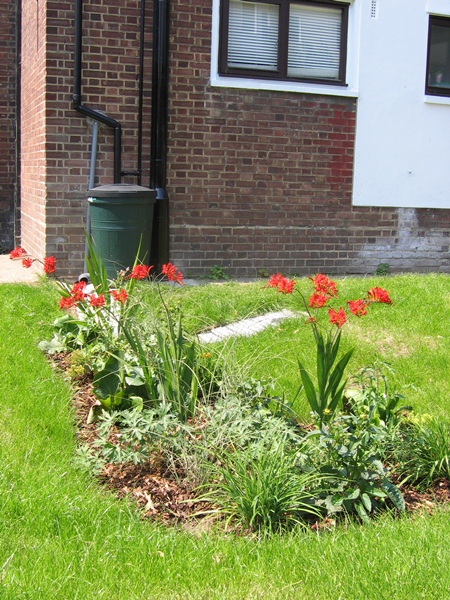- Delivering SuDS
- Using SuDS
- Background
- SuDS principles
- Benefits of SuDS
- Benefits of SuDS
- Why developers should choose SuDS
- Flood risk management
- Water quality management
- Biodiversity & ecology
- Amenity
- Air quality
- Building temperature
- Carbon reduction and sequestration
- Crime
- Economic growth
- Enabling development
- Flexible infrastructure/climate change adaptation
- Education
- Groundwater recharge
- Health and well being
- Pumping wastewater
- Rainwater harvesting
- Recreation
- Tourism
- Traffic calming
- Treating wastewater
- SuDS components
- SuDS components overview
- Source control
- Swales & conveyance channels
- Filtration
- Infiltration
- Retention & detention
- Wetlands
- Inlets, outlets and control structures
- SuDS performance & monitoring
- Delivery
- The costs & benefits of SuDS
- Adoption & maintenance of SuDS
- Legislation & regulation
- Design guidance
- Retrofitting SuDS
- Drainage exceedance
Component: Rain gardens
Description
Rain gardens are relatively small depressions in the ground that can act as infiltration points for roof water and other ‘clean’ surface water – i.e. water that is low in contamination levels.
Rain gardens are most likely to be implemented on private property close to buildings. In order for roof water to reach a rain garden, property downpipes are often disconnected from the drainage system and redirected.
Rain gardens should be planted up with native vegetation that is happy with occasional inundations.
Advantages & disadvantages
|
Advantages |
Disadvantages |
|
|
Where component can be used 
Residential: Yes
Commercial/industrial: Yes
High density: Yes
Retrofit: Yes
Contaminated sites: No
Sites above vulnerable groundwater: No
Performance
Peak flow reduction: Good
Volume reduction: Medium
Water quality treatment: Medium
Amenity potential: Good
Ecology potential: Good
Maintenance
-
Litter/trash removal
-
Inlet/outlet cleaning
-
Vegetation management
Read more on:



